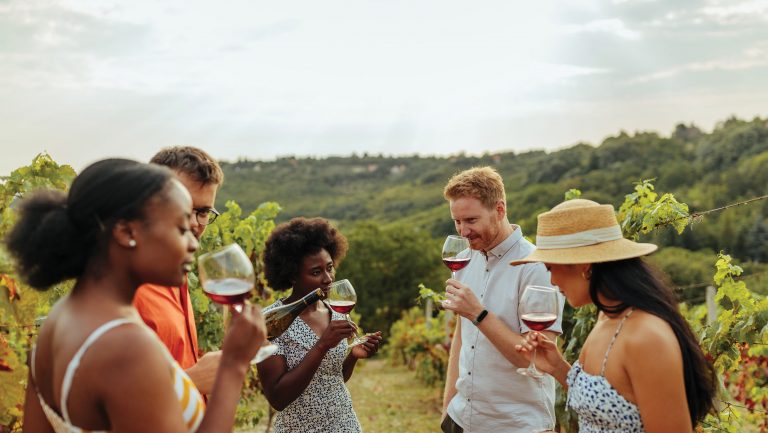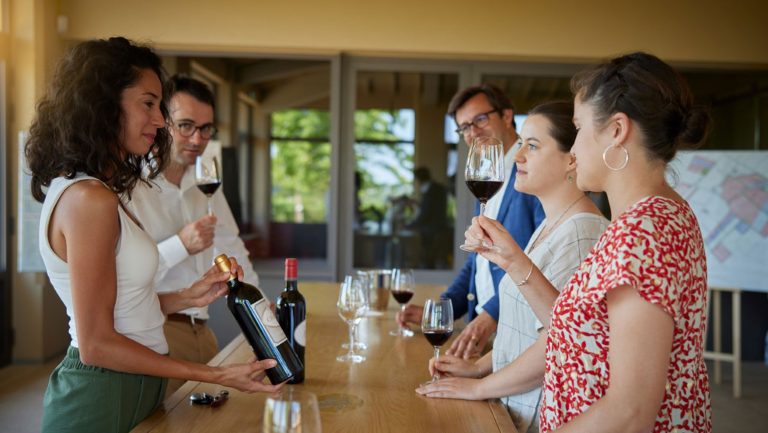Traveling to wineries is easily one of a wine professional’s best perks. But while outsiders might think these trips are nothing but boondoggles, in truth they’re important opportunities for accelerated learning. Not only are visiting wineries and exploring vineyards an essential means to understand wine but they’re vital to educating staff on how to sell the product.
Winery visits can quickly go off the rails, though. Talkative vignerons, poorly timed lunches, and extraneous tours of tank rooms (again?) can thwart your carefully planned itinerary.
So how do seasoned pros make the most of their winery visits? SevenFifty Daily asked three wine professionals for their tips.

Don’t miss the latest drinks industry news and insights. Sign up for our award-winning newsletters and get insider intel, resources, and trends delivered to your inbox every week.
Alban de Brosses
Senior Brand Manager—French Portfolio Specialist, Wilson Daniels, St. Helena, California
For Alban de Brosses, traveling to France’s elite wine regions isn’t just a perk—it’s in his job description. As Wilson Daniels’s eyes and ears in France, he is required to travel four to six times a year to maintain the company’s existing relationships and to scout for new additions to its portfolio of imported wines. He frequently visits Bordeaux and the Loire River Valley, regions that require a thorough understanding of the local geography and how best to manage one’s time.
“It depends on which region, but I try to do one [visit] in the morning and two in the afternoon,” de Brosses says, adding that the temptation to squeeze in extra appointments needs to be weighed against quality time lost elsewhere. “My whole goal,” he says, “is to form the relationship. I know the wine is good, but I am not there to judge the wine: I am there to get a personal feeling for the producer.”
Unlike other wine professionals—whose visit to a certain winery may represent a rare opportunity—de Brosses knows that he will most likely come back for a later visit. “Because of the nature of our portfolio,” he says, “I know I will always have time.”
As a result, he finds note taking to be a distraction from formulating the relationship on the first visit. But when his visit is complete, he takes five minutes to record a voice memo of his impressions of the winery on his iPhone. “The next time I’m in the area,” he says, “I listen to it again, and I can recall my first impression.”

Daniel Toral (credit: 50 Eggs).
Jennifer Wagoner
Wine Director, Sepia and Proxi, Chicago
“For me, vacation becomes work because wine is what I always want to do,” says Jennifer Wagoner, laughing. The wine director of Chicago’s Sepia and Proxi travels to wineries for both work and pleasure. While she tries to plan one vacation a year to a wine region, she also frequently joins trips sponsored by consortiums and wine regions. Because of this, Wagoner has learned both to plan every last detail of her travels and to roll with whatever might come.
One of Wagoner’s top tips—especially in certain regions, such as Burgundy and Alsace—is to notify winemakers ahead of time that you would like to see the vineyards. “The personality of the winemaker comes out in the vineyard,” she says. “It is the source of their joy, and when [wine] is put into that context, that’s what sticks with you—not their fermentation tanks.”
She also notes that having a good map of the wine region is crucial to improving one’s understanding. She will often mark up a paper map ahead of the trip, and then use Google Maps throughout her travels. This not only helps her maintain a sense of direction during her trip but is also crucial to the task of educating her staff.
“These trips are about spreading that knowledge to guests,” she says. “For my staff, I focus on aspects of the vineyards [and] pruning and vinification methods. But for guests, it’s the story. That’s what sells the wine, so I need to pass that along to my staff as well.”
Daniel Toral
Wine Director, 50 Eggs, Miami
Daniel Toral takes two kinds of trips each year: one he plans himself for vacation, and one sponsored trip. The differences between them are noticeable, but Toral feels that he gets something unique from both.
“Sponsored trips show a whole range of wineries that I would never pick on my own,” he says, noting that visits to large-volume producers can be helpful because such wineries often provide good options for by-the-glass menus.
For personal trips, Toral likes to focus on cuisine as much as wine—so that he can see how the wines fit into the regional culinary context. He notes that wineries will often devote more time and depth to the visit if you schedule it in advance and if they know you’re a wine professional.
But Toral cautions against overburdening your schedule, suggesting that two to three hours per winery—with ample travel time and lunch in between—is a good rule of thumb. “I remember on one trip to Piedmont,” he says, “we thought we were just going to have lunch with the winery, and we ended up spending seven hours with them—which of course made us late for a dinner appointment with another winemaker.”
To share what he’s learned on his visits, Toral schedules a one-hour training with staff that includes a slideshow presentation and samples to taste. “The visual reference,” he says, “helps them understand why the wine is so special.”

Dispatch
Sign up for our award-winning newsletter
Don’t miss the latest drinks industry news and insights—delivered to your inbox every week.
Kevin Day is a wine writer and photographer based in Colorado and the founder of the wine website Opening a Bottle. He is an Italian Wine Scholar with Highest Honors and a member of the International Association of Culinary Professionals. Follow him on Instagram and Twitter @openingabottle.







